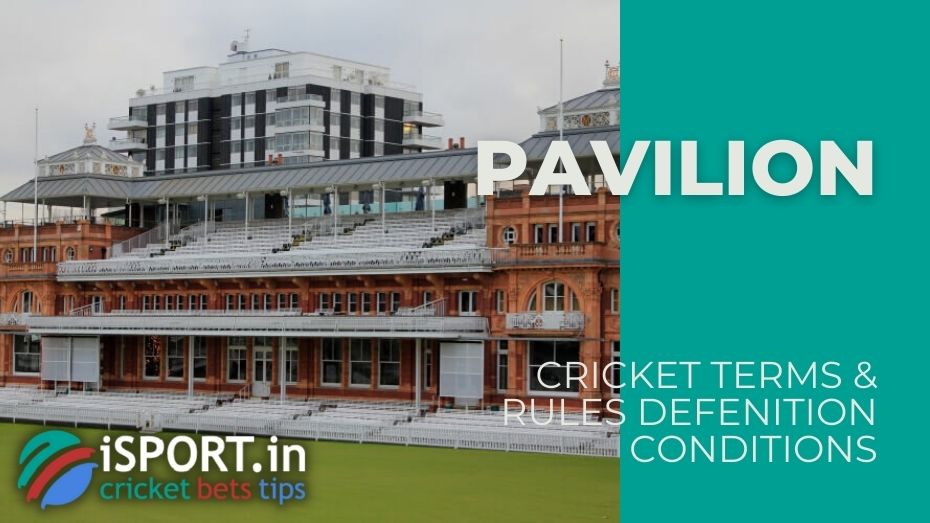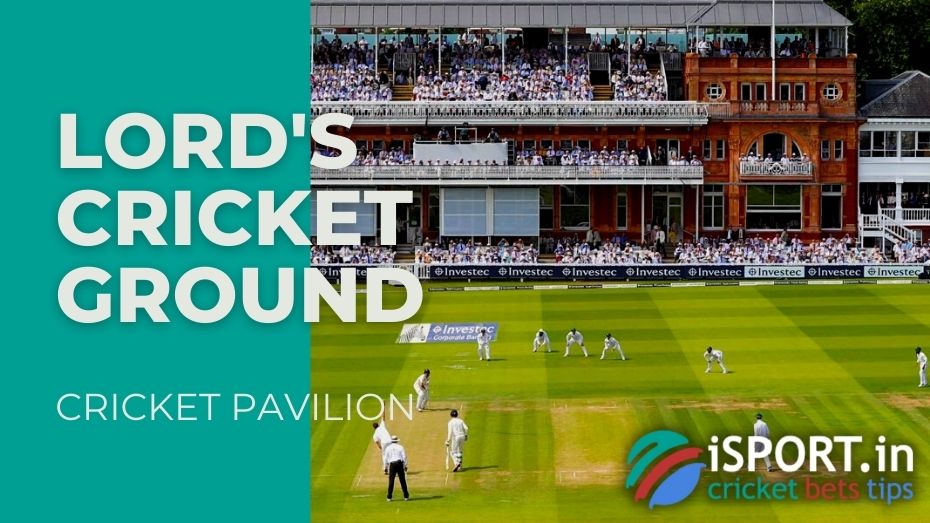Pavilion in Cricket

A cricket club’s pavilion is considered to be a component of the club’s infrastructure, which implies that it is a building that provides changing rooms for players. The style of each pavilion spans from simple structures to enormous multifunctional sports complexes that are situated on the cricket fields.

Pavilion in Cricket: History
A few of historically significant pavilions have managed to exist up to this point. The majority of them inhabit the United Kingdom. The British place a high importance on their cultural and athletic past, and as a result, they make every effort to preserve the historic structures.
If we were to discuss the most well-known pavilions in cricket, the Lord’s Cricket Ground and The Oval would undoubtedly rank at the top of the bucket list. In addition to being filled with the atmosphere of the Victorian period, these facilities, which are situated in London, are well known as emblems of cricket. The Cricket Pavilion at Oxford University was one of the notable projects that Sir Thomas Graham Jackson, the most prominent architect of the 19th century, was responsible for undertaking.
The Sydney Cricket Ground is a sporting attraction that has played home to matches at the highest level several times, making it one of the most well-known grounds outside of England.
Alterations to the pavilion’s construction, both in terms of its use and its appearance, were inevitable throughout the course of time. The old structures have been replaced with ones that are more contemporary. In the sport of cricket, the Kensington Oval in Barbados is often regarded as the most remarkable example of a sports complex that contains cutting-edge technology. This structure was given its name in recognition of Sir Garfield Sobers, a great former player who played throughout the 20th century.
It is also possible to recall the English-language Brabourne Stadium or the Rose Bowl, which is located in India. The creative approach that these complexes took to the design of the pavilion for cricket has earned them a prominent reputation all around the globe.
Pavilion: Designing Pavilion
The building of the pavilion is distinct from its equivalents in another sporting discipline in terms of its distinctiveness and design. This is something that should be taken into consideration. When it comes to design, there are three crucial aspects to take into consideration:
- Site Planning – the location of the sports complex. The form of the assignment and the nearby infrastructure must be taken into account: parking spaces, access for special vehicles (ambulance, firefighters), space for potential expansion, and the like.
- Accommodation – the nature of the accommodation within the pavilion itself will depend on the individual design. Common areas include changing rooms, toilets, showers, service and technical rooms, social areas, shops. If the club owner plans to expand the functionality of the facility, elements of recreation or mass media can be added.
- Pavilion Planning – careful preparation at the planning stage avoids all the complications in the future. Despite the customer’s wishes and the architect’s design project, there are mandatory standards that builders must adhere to: the length and width of the corridor, travel routes, technical areas, and convenient access to the field and entry/exit.
Read more information about cricket in our section with cricket terms.
